Two Decades of Discovery
October 22, 2019
By Audrey St. Clair ’03
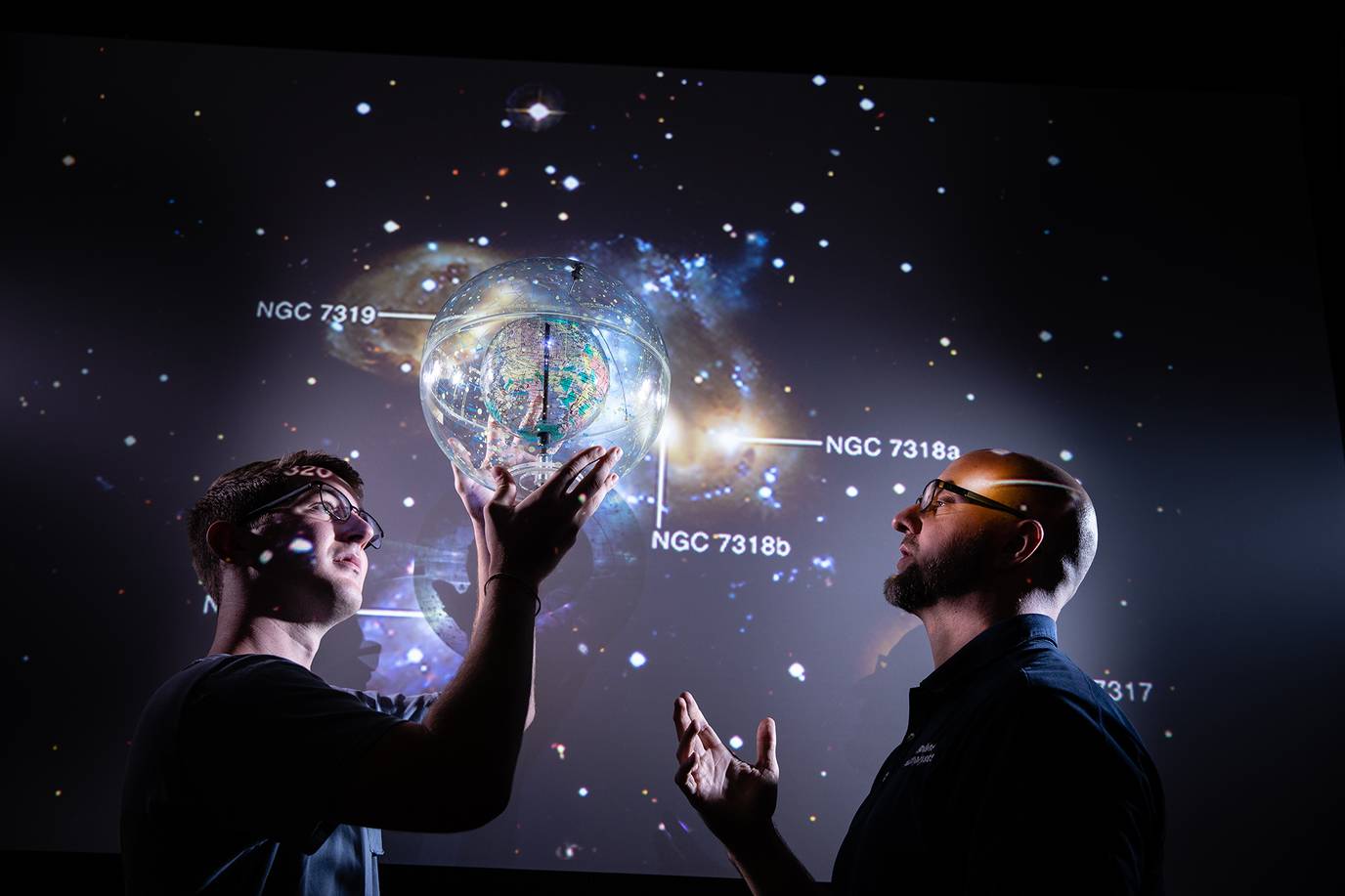
Rollins’ Student-Faculty Collaborative Scholarship Program is celebrating its 20th anniversary this year. To mark this milestone, we’re looking back at 20 of the program’s most significant accomplishments.
Exploring star formations of isolated galaxies. Researching nanoparticles to improve cancer therapies. Spotlighting immigration issues and helping provide on-the-ground solutions. For the past 20 years, Rollins’ Student-Faculty Collaborative Scholarship Program (SFCSP) has been preparing our students to become the thought leaders of tomorrow. Not only does this unique program develop technical skills in experimentation, data analysis, and research protocols, but it creates critical thinkers who learn to question what they know.
The idea of an undergraduate research program where faculty would actively engage students as research partners is what drew physics professor Thomas Moore to Rollins in 1999. The chemistry department was already doing something along those lines, but it wasn’t codified into a formal program. Moore turned it into one, and by the summer after his first year, the SFCSP had funding. Moore ran the program as it developed and flourished over the next 10 years before handing over the reins to physics professor Chris Fuse in 2010.
Between 35 and 60 proposals are submitted every year��—about 45 percent in humanities and social sciences, the rest in natural sciences. Of those, an average of 40 are funded from an annual program budget of about $250,000, which consists of alumni donations and institutional funds. The selected proposals require a full-time commitment for eight weeks over the summer, and each student receives a $3,000 stipend and can live on campus for free. The College also pays for students to go to conferences and present their findings—not in the student category, but alongside professional academics.
“Many colleges have research opportunities for students,” says Fuse. “What makes our program stand out is that we never think of our students as doing a little bit of work here and there. They’re side by side with us; they’re doing the major research with us. What we want is that our students will be there for the inception of the program through the completion.”
Since the program began, nearly 600 students and 100 faculty have participated, and almost every department has been represented, including the College’s newest major, social innovation. There have been more than 60 publications/performances/books produced as a result of student-faculty collaborations in topics as diverse as architectural acoustics and African art.
It’s the success of this kind of program—of the scholars and professionals that it’s creating—that reaffirms Rollins’ approach to liberal arts education as one that focuses on active learning and meaningful mentorship. Having expanded human knowledge in everything from galaxy formation to 18th-century music, the following 20 accomplishments speak directly to the heart of our mission to educate the next generation of responsible leaders to tackle problems for which we don’t yet have the solutions.
1. This is real research. Want proof? Nearly 20 percent of projects result in scholarly publication or the artistic equivalent. Just ask Anne Fertig ’13 and emeritus English professor Ed Cohen, whose four years of research culminated in the publication of their book, A Song of Glasgow Town: The Collected Poems of Marion Bernstein. Fertig went on to become a Fulbright Scholar at the University of Glasgow and is currently pursuing her PhD in English literature at the University of North Carolina at Chapel Hill.

2. It’s not just for science majors. In fact, half of this past summer’s projects are in non-science disciplines, which theatre professor Peg O’Keef quite literally set the stage for back in 2003 when she and Kara Winslow ’04 plunged into the aesthetics of Pulitzer Prize-winning playwright Edward Albee. The theatre department was hosting Albee for the summer, and O’Keef was to direct two of his plays. “Kara was an ally in bringing their research into the classroom, the full production at the Annie Russell, and the often challenging interaction with the legend himself,” says O’Keef. Now, theatre professor David Charles and 14 students are currently in production on Private Lies: Improvised Film Noir, the fifth original play in the improv genre through the Student-Faculty Collaborative Scholarship Program. This expansion set in motion by O’Keef has paved the way for art history professor MacKenzie Moon Ryan, Cristina Toppin ’21, and Morgan Snoap ’20 to curate an original African art exhibition at the Cornell Fine Arts Museum and has empowered social entrepreneurship professor Josephine Balzac and Joshua Bedoya ’21 to analyze how benefit corporations are reshaping America.
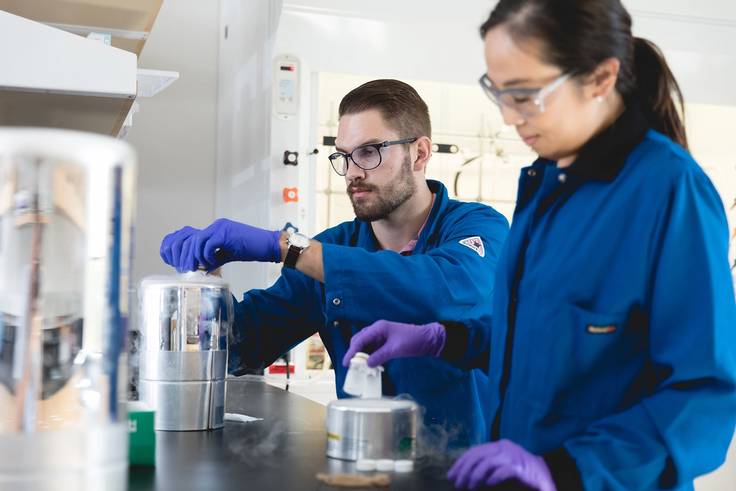
3. This kind of hands-on program is the best preparation for graduate school. Seventy percent of program participants go on to attend graduate school in everything from biology and physics to English literature and religious studies. Through the SFCSP and the mentorship of chemistry professor Ellane Park, Julian Grundler ’18 discovered a passion for nanoparticle research and its potential impact on cancer therapeutics. Park and Grundler’s partnership took them to MIT and landed Grundler in a prestigious PhD program at Yale, where he’ll spend the next five years researching ways to improve the effectiveness of drug delivery. It’s this unique experience to perform real research and to partner one-on-one with expert faculty that gives our students a competitive advantage over undergrads from R1 universities.
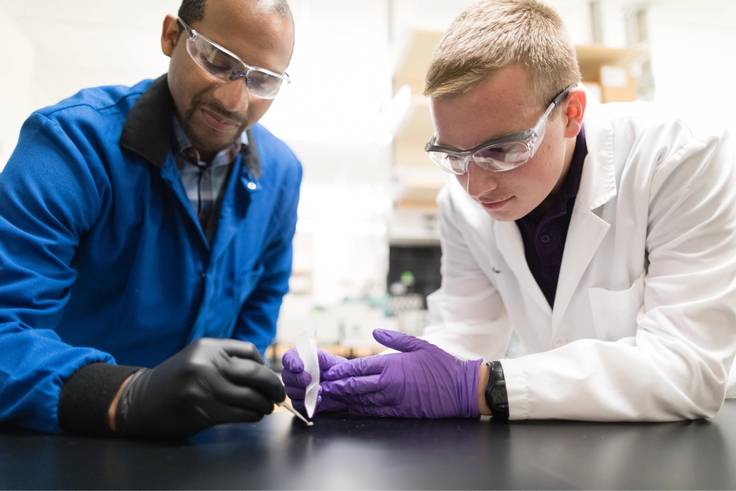
4. The program is only getting stronger. This past summer saw the most participants and the highest number of projects since 2011, with 46 proposals receiving funding for projects that ranged from investigating mechanical vibrations in trumpet sounds to examining racism in Latinx immigrant children. It’s especially growing among new faculty members, with 25 percent of faculty participating within their first three years at Rollins.
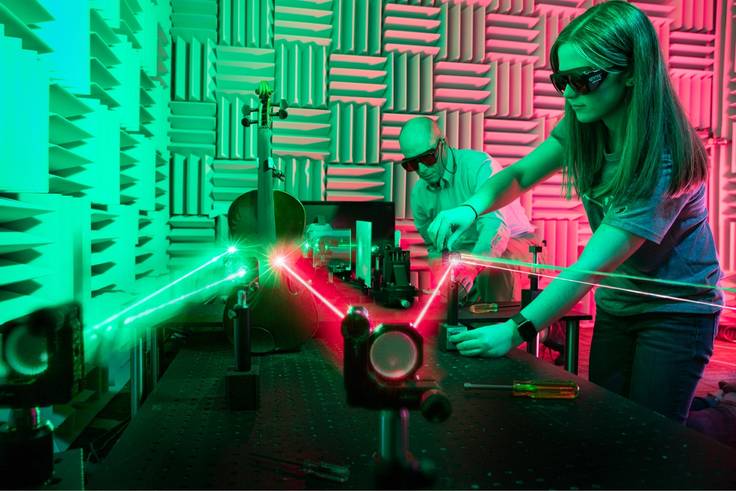
5. The connections and community it produces are second to none. Lauren Neldner ’20 became fascinated by the way things work because of her high school physics and science fair teacher, Sarah Evans ’06. Turns out Evans, who now runs a STEM retention program at UCF, studied under and performed research alongside Thom Moore while at Rollins—a destiny that would end up calling to Neldner as well. “[Sarah Evans] introduced me to Dr. Moore while I was in high school, and I continued coming back to campus for tours,” says the physics major. “I loved the personalized interactions I saw and the research experience I would be able to get. This made me certain that I wanted to come to Rollins.” By the start of the spring semester of her first year, Neldner began conducting research alongside Moore, and by the end of the summer, she had already presented at a pair of professional conferences and published a research paper. Neldner has gone on to complete the prestigious IRIS Internship Program, a paid seismology research program funded by the National Science Foundation’s Research Experiences for Undergraduates initiative, and to earn a 2019 Goldwater Scholarship, the preeminent undergraduate award in the fields of mathematics, engineering, and the natural sciences.
6. It’s a reason students come to Rollins. The program has become such a differentiator for the College that for many students it’s among the top draws to enroll. Among those students is Chris Becker ’20, who jumped right in as a second-year student to explore the possible existence of Planet Nine in the outer edge of the solar system. Through this research alongside physics professor Chris Fuse, Becker discovered that his real interest lies in big data and analytics, a proclivity that might have been unrealized had he not worked with large planet formation code that generates massive data sets. Using skills and techniques he learned through his research, Becker is currently writing his senior thesis on the analysis of galaxies from the Sloan Digital Sky Survey and is applying to graduate programs in data analytics.
7. A shared interest can lead to great success. Carmen Cheng ’18 and computer science professor Dan Myers turned their shared love of the guitar into a research project that looked at artificial intelligence and music and how to predict the popularity of songs using musical features. This experience—which bolstered Cheng’s interest in research and skills in data science and analytics—helped prepare her for her current role as a site reliability engineer at Apple. “I learned how to automate graph-making with Python and use machine-learning models to classify data sets,” says the double major in computer science and critical media and cultural studies. “I also got to practice public speaking and writing papers for publication. Learning doesn’t have to be boring, and passions don’t have to be compartmentalized.” Cheng now spends her days at Apple analyzing network configurations to ensure Siri��’s consumer systems are free of interruptions. Not a bad gig fresh out of college.

8. It has created a cave of discovery in physics professor Thom Moore’s anechoic chamber, where he’s worked alongside 25 students to produce published research in the micro-niche field of musical acoustical phenomena. One of those students was Aditya Mahara ’12, a Cornell Scholar who brought the idea of investigating the physics of the Himalayan singing bowl—long thought to aid in healing—to Moore as an idea for a research project. While at Rollins, Mahara also co-founded Making Lives Better, a service club on campus designed to focus on education and health issues facing his native country of Nepal. The physics major went on to earn his PhD in biomedical engineering from Dartmouth and is now a product manager for Siemens Healthineers, a leader in medical technology that enables health-care providers worldwide to meet today’s challenges and excel in their respective environments.
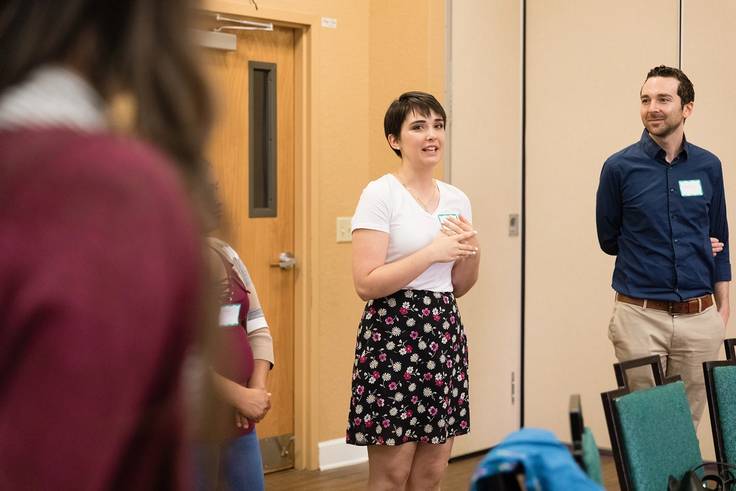
9. It can become your life’s work. Before taking Activism and Social Change with anthropology professor Nolan Kline, Mary Vickers ’20 thought anthropology was confined to studying isolated tribes or early humans. “I didn't know there would be so much application to it,” says Vickers, who following this course developed a project with Kline through the SFCSP that examined the social and health-related effects of immigration enforcement in Central Florida farmworking communities. For eight weeks, Vickers spent every day at either the Hope CommUnity Center or the Farmworkers Association of Florida asking tough questions, listening to stories of turmoil and triumph, and learning from community providers. The international relations and Spanish double major has continued her work with these immigrant communities, folding it into her honors thesis. “I started the [Student-Faculty Collaborative Scholarship Program] with essentially no research or ethnographic experience, and now I’ve done data analysis, have presented at conferences, and published an academic article,” says Vickers. “I don’t think there’s anything that can prepare you to have conversations with people you just met about the systematic discrimination and oppression that affects every aspect of their life. It was incredibly humbling and has shown me what I want my career to be.”
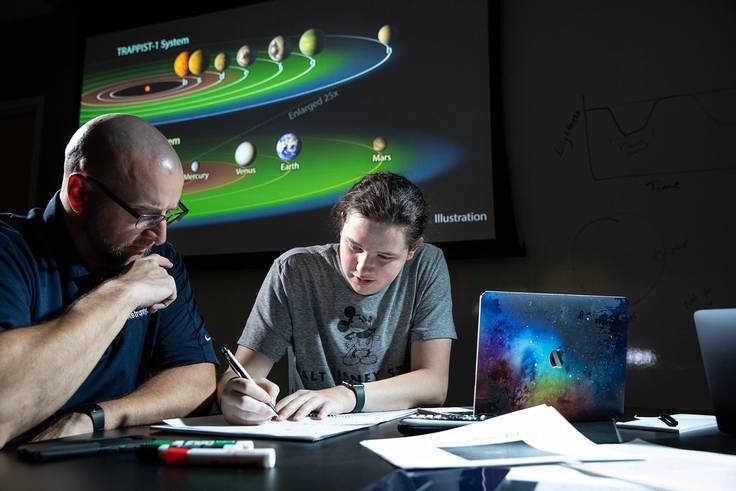
10. “Research is the most intense kind of learning students can do,” says physics professor and program director Chris Fuse. Doing research on a real topic that no one has studied before means the students have to make connections in ways they haven’t been able to previously. “In class, students are provided ideas and concepts that directly build off previously presented work and are tasked with problems that are easily defined by solutions that can be determined fairly quickly,” says Fuse. “When it comes to research, students have to draw on the skill sets they learn in a variety of disciplines to make connections between ideas and topics that might not previously have existed.” This willingness to see the research through led Fuse and Emma Broming ’12 to determine if the binary stars within galaxy groups were useful or junk data, the latter of which had been the assumption. The pair’s novel research has now changed how some astronomers use X-ray data and has added to the understanding of how to determine the age and evolution of a group of galaxies.
11. It provides a foundation for taking on the biggest challenges facing our world. Nick Horton ’09’s passion for the lab started at Rollins when he conducted acoustical research alongside physics professor Thom Moore. The pair modeled the magnetic pickup of an electric guitar and published their findings in the American Journal of Physics, the first of many scholarly publications for Horton, who earned his PhD in applied physics at Cornell before serving as a national security analyst at The Johns Hopkins University Applied Physics Laboratory. Now a senior scientist at engineering and scientific consulting firm Exponent, Horton is working to solve regulatory, health, environmental, and business issues on a global scale.
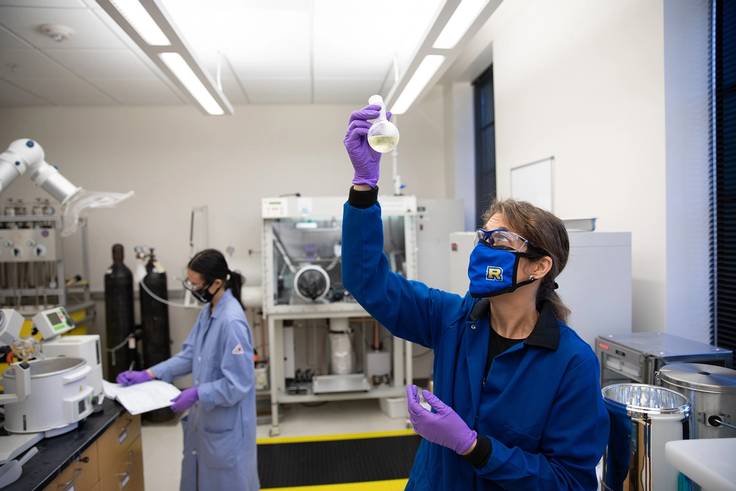
12. It’s not only creating expert researchers but practitioners as well. Several program participants have gone on to become physicians and dentists and have been successful in these pursuits because of the foundational skills they learned through hands-on experience and personalized attention. Chemistry professor Laurel Habgood explains how students develop patience to do an experiment right the first time and to listen and ask the right questions before jumping in—the same approach needed when dealing with patients. They become better observers by questioning the hypothesis and learning how to rethink based on what they observe, an essential skill when the practice of medicine demands you change course after listening to a patient. The opportunity to do sustained research as an undergraduate teaches meticulous note-taking and data analysis skills, a must when reviewing tests and questioning results. In presenting at national conferences as well as during Family Weekend, students learn how both to present to professionals in their field and to laypeople who may be less informed, a skill used daily as a health practitioner. It’s this kind of foundation that has led Phillip McKegg ’18 to a master’s program in biomedical sciences from Tufts School of Medicine and now an orthopedic traumatology fellowship at the University of Maryland Medical Center.
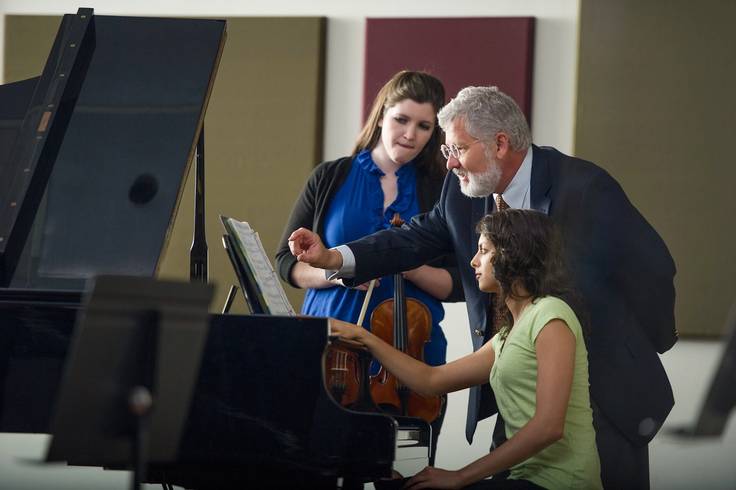
13. It’s unearthed long-forgotten Moravian music. Nearly 30 years ago, music professor John Sinclair was exploring the library of Winter Park’s First Congregational Church when he stumbled on some unusual, beautiful music written by a group called the Moravians that had lay dormant for years. Sinclair discovered that the Moravians had a deep musical history in the U.S., dating back to before the Revolutionary War, and that they had founded the country’s first Bach Festival, bringing to America the music of European sophistication. What started as a pet project turned into a partnership with the Moravian Music Foundation and multiple research projects through the Student-Faculty Collaborative Scholarship Program. Sinclair and his students have edited a multitude of 18th-century pieces that they’ve gone on to perform and publish, updating these relics from original to modern notation and bringing to life music that hasn’t been heard in more than 200 years.
14. The power of asking questions that no one knows the answer to. This is one of the ways physics professor and the program’s first director Thom Moore describes the value of this unique partnership. He explains that when you engage in true research, you ask questions for which there are no answers yet. When a student understands that not even the professor knows the answer, the research becomes collaborative and the students become scholars in their own right. “I love when a student argues with me about an idea I have,” says Moore. “Once they understand that I don’t have the answers, they’re quite willing to question my reasoning and posit their own ideas. The best experiences occur when they convince me that their idea is better than mine, and when this happens it becomes clear that they’re true scholars. These moments can’t be planned, as they’re organic to good scholarship.”
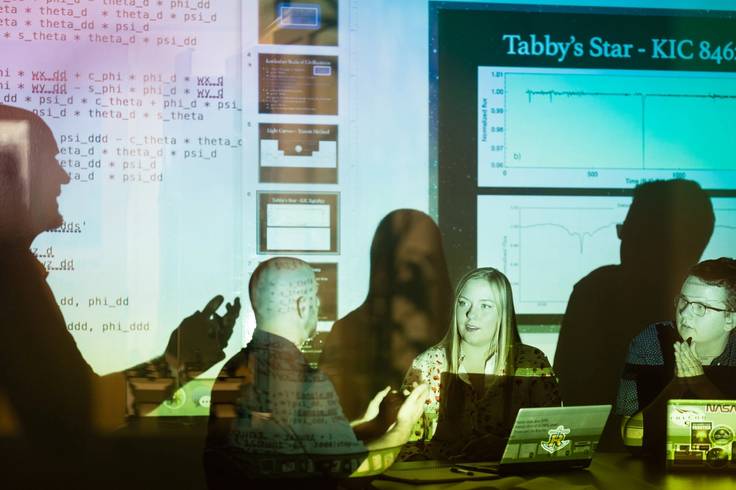
15. It’s a launch pad for prestigious research opportunities. The opportunity to conduct early research means our undergrads are primed for highly selective opportunities like the National Science Foundation’s Research Experiences for Undergraduates (REU) initiative. In Georgia Tech’s Civic Data Science Program, math and computer science major Muniba Khan ’20 worked toward finding solutions to civic challenges in Atlanta, while Lauren Neldner ’20 studied seismology in New Mexico through the IRIS Internship program before heading to Brown University to research ambient noise caused by ocean waves. Josephine Spiegelberg ’20 was first bitten by the research bug when she examined moon formation alongside physics professor Chris Fuse, which led to an REU at the University of California at Davis to explore condensed-matter physics.
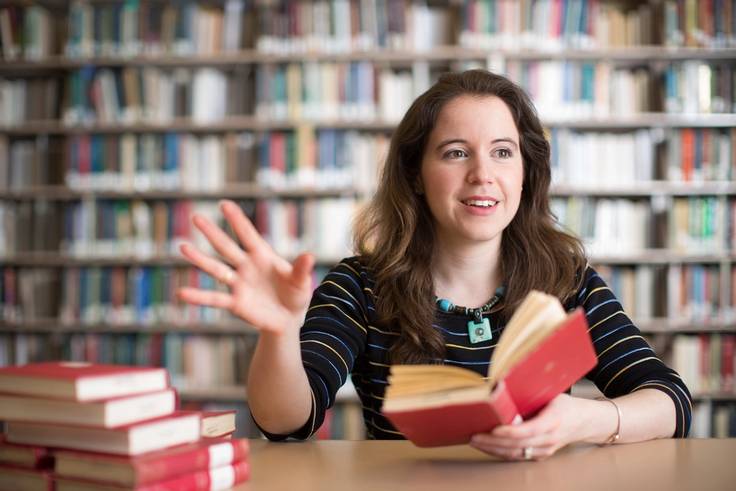
16. And a launch pad for some of the world’s most prestigious scholarships and fellowships. Cherie Ramirez ’06 has earned an array of accolades and credentials: two-time Goldwater Scholarship winner, PhD in genetics from Harvard, director of Global Health Education and Learning Incubator at Harvard, and now professor of biochemistry with a focus on global health at Simmons University. When she transferred to Rollins from Valencia at just 16 years old, she immediately delved into research with physics professor Thom Moore, a rigorous experience that prepared her to land a Harvard internship to study cancer biology as a second-year student and then the opportunity to conduct hearing research in Belgium and study cancer pathways in Spain. “In addition to my scientific studies, I really enjoyed learning about literature, philosophy, and history,” says Ramirez. “There was a lot of intersection. I remember being in three classes and learning the same word, but it had three different meanings depending on the field of study. Rollins gave me the opportunity to explore and realize that so many things in life are connected.”
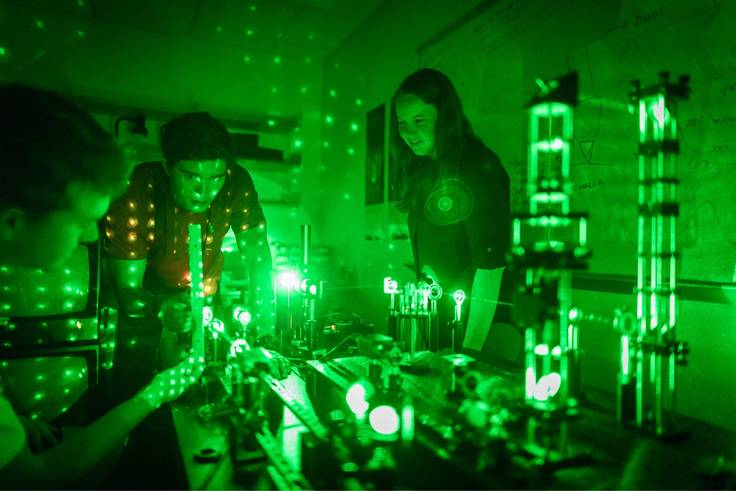
17. It has created some of the best minds in the fields of chemistry, anthropology, and business. And now these graduates have returned to Rollins as professors and mentors nurturing their own students through close-knit scholarship. Ashley Cannaday ’11, an assistant professor of physics, is carrying forward the work she started as a student under physics professor Thom Moore, most recently building a microscope from scratch alongside Samuel Hanna ’21 and James Hoelle ’21 that could aid in the earlier detection of neurological diseases like Alzheimer’s. Anthropology professor Nolan Kline ’08 has partnered with the same organization he did as a student—the Hope CommUnity Center just 40 minutes from campus—in an effort to shine a light on immigration issues in farmworker populations. Raghabendra KC ’13—who conducted research as a student with math professors Zeynep Teymuroglu and Jay Yellen on portfolio optimization for the Nepalese Stock Exchange—returned to Rollins in 2018 as a marketing professor and is looking to participate in student-faculty scholarship next summer.
18. It gives you the confidence and skills to change course. Just ask Brittany Hollister ’12, whose plans to attend pharmacy school shifted after she spent the summer studying a protein involved in mitochondrial movement by examining zebrafish. “This experience taught me how to think like a scientist and read papers, troubleshoot experiments, think critically about results, and think about next steps,” says the biochemistry/molecular biology major who realized then that her future lay in the lab. Hollister went on to get her PhD from Vanderbilt before becoming a health disparities fellow at the National Human Genome Research Institute in Maryland.
19. We’ve expanded the knowledge of our beloved hometown. Alongside history professors Claire Strom and Jim Norris, history majors Sydney Marshall ’15 and Danielle Johnson ’16 combed through the Rollins College Archives and other local collections to publish two books about Rollins’ hometown of Winter Park. The first—Images of America: Winter Park— focuses on the city’s development from the 1880s to 1960, which required extensive research to provide historic context for the images. As the students sourced files, they were fascinated with the idea that our interpretation of history is so strongly influenced by the artifacts and documents available to review and relished discovering how much of Winter Park’s old cultural and artistic events had ties to Rollins, which was founded just a few years after the city. The second volume—Images of Modern America: Winter Park—focuses on the time period from 1960 to present, and both editions can be purchased at Arcadia Publishing.
20. It’s preparation for … anything. Three summers worth of research with physics professor Chris Fuse on evolution of small galaxy systems groomed Emma Broming ’12 for her current career as an economic and financial consultant. As much as conducting research is about immersing in a subject matter, it’s also about learning how to become a critical thinker, a problem-solver, a troubleshooter, and adaptable and persistent in the face of uncertainty and change. Broming credits the extensive writing experience and data analysis she acquired through the SFCSP as the most valuable skills sets in her current role.
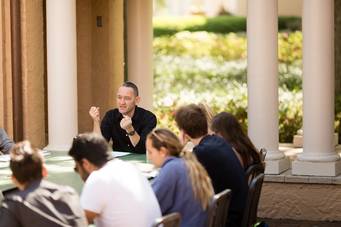
See for Yourself
Get a feel for Rollins’ unique brand of engaged learning and personalized attention through one of our virtual or in-person visit experiences.
Read More
July 08, 2024
Gunter’s Book on Climate Change Receives Multiple Awards
Political science professor Mike Gunter’s book Climate Travels recently won awards from Foreword magazine and the American Library Association.
June 27, 2024
Lahlou ’24 Earns Boren Scholarship
Adam Lahlou ’24 has earned a Boren Scholarship, a prestigious award reserved for students who intend to pursue careers in federal national security.
June 17, 2024
A Path to Purpose
Falecia Williams ’91 expanded her world by earning a Rollins degree. Now, she is working to expand the worlds of thousands of college students.
